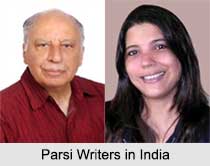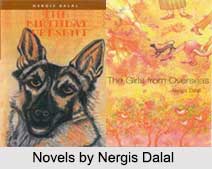 Parsi Writers in India have contributed a lot to the literature of the country. They have ventured deep into the field of creative work. There are several Parsi writers whose work in English have brought them immense fame and placed them high in the social structure. The Parsis, after settling in India, adapted Gujarati language but have preferred to express themselves in English.
Parsi Writers in India have contributed a lot to the literature of the country. They have ventured deep into the field of creative work. There are several Parsi writers whose work in English have brought them immense fame and placed them high in the social structure. The Parsis, after settling in India, adapted Gujarati language but have preferred to express themselves in English.
Eminent Parsi Writers in India
From among the top Parsi writers in India writing in English, Rohinton Mistry, Boman Desai, Firdaus Kanga, Farrukh Dhondy, Perin Bharucha, Meher Pestonji, Dina Mehta, Nergis Dalal, Ardashir Vakil, Gieve Patel, Keki N. Daruwalla, etc are the prominent names.
Behram Malbari: Century ago, Behram Malbari, a Parsi poet, was also among the earliest Indians to start writing in English. The famous collection of poems of Behram Malbari entitled "The Indian Muse in English Grab" was first published in 1877 and the later publication are a collection of 26 sketches in "Gujarat and Gujaratis" and "The Eye of English Life" with his reflections on the English life. Both the books are by nature, pseudo fictional.
Cornelia Sorabji: Another reputed Parsi writer by the name of Cornelia Sorabji who published three volumes of fascinating short stories namely, the "Sun Babies" and "Between the Twilights", "Love and Live behind the Purdah" and two autobiographical works in the 20th century.
 D.F. Karaka: Dosabhai Framji Karaka was another early Parsi novelist and a reputed journalist, who published some novels in the 1840s and 1850s. He spent 1858–1859 in England, where he wrote "The Parsis: their history, manners, customs and religion".
D.F. Karaka: Dosabhai Framji Karaka was another early Parsi novelist and a reputed journalist, who published some novels in the 1840s and 1850s. He spent 1858–1859 in England, where he wrote "The Parsis: their history, manners, customs and religion".
Nergis Dalal: Nergis Dalal was one of the most prominent feminist writers of India and she was also a Parsi living in India. She also published four novels in the 1960s and the 1970s.
Perin Barucha: Perin Barucha wrote one novel called "The Fire Worshipers" which was published in 1968. The novel stressed on the customs of the Parsi Community and also gave importance to the problem of inter-caste marriage, several current social problems faced by the Parsi Community in India, etc.
Dina Mehta: Another prominent Parsi novelist who writes in English in India is Dina Mehta. There are several short stories, a novel and plays to her credit. "Brides are not for Burning" is a play written by Dina Mehta which became very famous among playgoers mainly in the city of Mumbai in Maharashtra.
Keki N. Daruwalla: Keki N. Daruwalla"s writings in English do not have much about the Parsi community. But there are a few references like the "Tower of Silence" and other such symbols and metaphors of Parsis.
However, in some of the Parsi writer"s works like that of Perin Barucha, there is a mark of the writer"s ethnic identity. The literature of Parsis is characterized by both the features of ethnocentric and minority discourse.




















